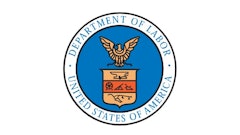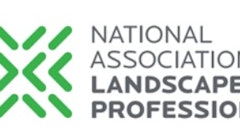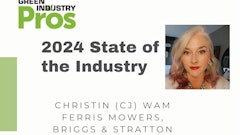
It should come as no surprise that Hispanic laborers have played an enormous role in the growth of the Green Industry over the past couple of decades. What might surprise some, though, is the increasingly important role Hispanics are playing as Green Industry leaders. The newly formed National Hispanic Landscape Alliance (NHLA) is looking to increase both consumer and governmental awareness on each of these fronts.
After holding their first-ever conference in Washington, D.C. on March 10, the NHLA is now focused on three primary objectives: recruiting new members, collaborating with other Green Industry and/or Hispanic associations on issues of mutual interest, and supporting policy positions that help foster an environment where Green Industry businesses can grow and create opportunities for not only Hispanics, but U.S. workers in general.
“First of all, we’ve come to realize that if we’re not sufficiently engaged in the important policy discussions that impact our livelihoods, others are going to dictate our future,” says Ralph Egues, NHLA executive director. “Secondly, while huge attention is being paid to Hispanic issues by both parties in Washington, the concerns of the landscape industry have not been identified as among those. A key part of our mission is changing that. The NHLA will advocate individually and in collaboration with others at both the federal and state levels.”
Greater support for green infrastructure
Regarding policy issues, NHLA is immediately concerned about regulations that make acquiring labor more difficult and/or costly, and those which unfairly cast turf as a net-negative element of a landscape, environmentally speaking.
“For instance, we are opposed to the EPA’s national WaterSense program,” Egues says. “What concerns us the most is that this ‘voluntary government program’ is being picked up in local and regional coves, and when that happens it’s no longer voluntary.” The WaterSense program states that new home sites will be limited to 40% grass use on the site’s landscape-able area. “This paints turf as inherently bad without properly looking at the value you get from turf,” Egues points out. “The NHLA wants to help educate consumers.”
The NHLA also wants to show its support for policy that advances investment in green infrastructure. One such policy is the National Small Business Tree Planting Program, under which the Small Business Administration (SBA) makes grants to states for contracting with small businesses to plant trees on land owned or controlled by a state or local government. H.R. Bill 4509, the Small Business Environmental Stewardship Assistance Act of 2010, was introduced by Congressman Kurt Schrader (D-OR) in January 2010, but never did become law.
Shifting the spotlight from the border to the job board
The NHLA would obviously like to see bills such as H.R. 4509 actually become law. The association would also like to see the ongoing debate over the need for immigration reform to finally give way to meaningful action. “Our nation is a country of immigrants, yet our immigration system is broken,” Egues says.
Related to immigration reform, the NHLA is also concerned about the increasingly unpredictable supply of affordable seasonal labor, primarily as a result of recent changes to the H-2B temporary worker visa program, which allows U.S. employers to bring foreign nationals to the United States to fill temporary non-agricultural jobs. The majority of H-2B guest workers come from Mexico.
“I returned from Mexico on April 15 having gone there to procure some of my temporary workers for this season,” says Jesus “Chuy” Medrano, co-owner of Colorado-based CoCal Landscape and the recently elected president of NHLA. “The things company owners have to go through to get these temporary workers are tremendous. There is a horrendous lack of information and assistance. But we need the H-2B program because this program is what allows companies like ours to grow.” CoCal is one of the largest landscaping firms in the country, with annual sales reportedly in excess of $30 million.
For starters, Medrano would like to see an increase in the number of H-2B visas made available each year, which currently stands at 66,000, because demand continues to outstrip supply—even in today’s environment of high U.S. unemployment. “Since we are located in the snowbelt we simply cannot keep everyone employed all year long,” Medrano points out. “If we tried, we’d go out of business.”
Proponents of H-2B say that the demanding, seasonal nature of employment in the Green Industry makes it difficult to find home-grown help. Egues says, “You just have to recognize that there isn’t an ample supply of willing American workers to do seasonal labor out in the elements. We need this immigrant labor pool, and public policy that makes this more difficult and/or expensive only serves to weaken those companies that are looking to do things the right way while creating opportunity for companies that are doing it the wrong way.”
Programs like H-2B, Egues adds, serve as a disincentive to hire illegal workers. H-2B workers compete for jobs with those who enter the U.S. without proper documentation. Furthermore, an affordable supply of temporary labor allows reputable landscape companies to remain profitable, keeping the not-so-reputable companies at bay.
Some argue that programs like H-2B are used to pay lower wages, cheating Americans out of jobs while taking advantage of immigrant guest workers. One of the Department of Labor’s proposed solutions is to force employers to pay more for H-2B labor. “The reality is that landscape company owners can’t pay more unless they charge more,” Egues points out. “Increasing the cost of labor only makes a marginally profitable business unprofitable.
“If you continue along this thought process, reputable companies will drop unprofitable clients,” Egues continues. “These reputable companies then cut back and layoff foremen and supervisors. Furthermore, those unprofitable clients who were dropped now look to a new landscape service provider, and many times these providers are the ones that use lower-cost, illegal workers.”
According to Egues and Medrano, the government’s focus should be on helping the Green Industry flourish so it can provide more of the jobs Americans want. “For every 20 or 25 laborers we employ, many of whom are guest workers, we generally have to hire a bilingual person to train and manage them,” Medrano relates. “This is the growth we’re talking about; as a landscape company grows, the more Americans it has to hire to fill these middle-management roles.”




























